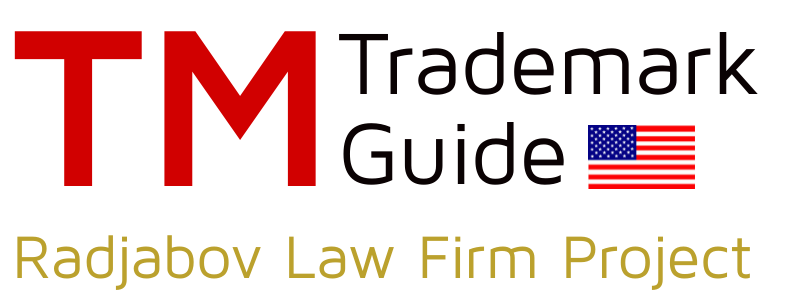Are trademarks registered in the United States?
Trademarks in the United States are typically filed with the United States Patent and Trademark Office (USPTO). These distinct words, symbols or insignias serve as a company or individual’s personal brand, allowing consumers to easily recognize and remember their products or services. The process of obtaining a trademark registration can be lengthy and complex, but it also provides legal protections and allows the owner to more effectively defend their rights if someone else tries to utilize a similar mark.
It’s worth noting that trademarks can exist even without registration, known as “common law” trademarks. These are acquired through use rather than official registration, but registered trademarks offer more comprehensive legal protection and are generally easier to defend. Consider a trademark as a “badge of ownership” – similar to how a property owner displays a “No Trespassing” sign to indicate that the land is off-limits. A trademark owner uses their mark to let others know that it is associated with their products or services and should not be used without permission. A registered trademark is like a tangible “No Trespassing” sign, while an unregistered trademark is more like a verbal warning. Both can be effective, but a registered trademark provides a more solid foundation for legal action.
Is trademark registration compulsory?
Trademark registration may not be a necessity, but it is highly recommended. A trademark serves as a way to differentiate your brand from others in the market – it is like a signature or a distinctive logo representing your products or services. Just as a signature sets a person apart, a trademark does the same for a business.
Imagine you are faced with the task of selecting between two identical products, but one has a recognizable brand name and logo while the other does not. Which one would you choose? Most individuals would opt for the one with the recognizable brand because it elicits trust and familiarity. This is where a trademark becomes invaluable. By registering your trademark, you are legally safeguarding your brand and establishing ownership over it.
However, it is important to keep in mind that the process of obtaining a trademark can be both lengthy and costly. It is crucial to weigh the pros and cons before deciding whether or not to pursue it. In the end, the decision to trademark your brand is dependent on your business goals and objectives.
Is trademark registration free?
Obtaining a trademark is not a free process. It involves submitting a trademark application to the government and paying fees to cover the cost of reviewing and processing the application. These fees differ based on the type of trademark and the country in which it is being filed, but they can range from several hundred to several thousand dollars.
Imagine trademark registration as planting a flag in the realm of intellectual property. It is similar to staking a claim to a piece of real estate, but instead of physical land, you are claiming ownership of a distinctive word, phrase, or symbol that sets your brand apart from others in the market. Just like with real estate, there are expenses involved in securing and protecting your claim.
However, it is important to note that the trademark registration process can be complex and time-consuming, so it is often advisable to seek the guidance of a competent trademark attorney. This professional can help you navigate the legal requirements and ensure that your trademark application is properly prepared and filed.
To summarize, obtaining a trademark is not free, but it can be a valuable investment in the long-term success and protection of your brand.
Is trademark registration worldwide?
Trademark registration is not worldwide, in the sense that there is no single trademark registration system that applies to every country in the world Rather, each nation has its own system for registering and protecting trademarks. Imagine a quilt, made up of patches each representing a different country. Each patch is distinct, with its own colors and patterns, but they come together to form a cohesive whole. In the same way, each country’s trademark system reflects the unique qualities of its legal and business landscape.
Fortunately, there are options available to simplify the process of obtaining trademark protection in multiple countries. The Madrid Protocol, for example, allows businesses to file a single application to register their trademark in various nations. This streamlines the process and reduces the costs associated with protecting a trademark on a global scale.
In conclusion, while there is no singular method for trademark registration worldwide, there are mechanisms in place to make it easier for businesses to safeguard their trademarks in multiple countries.
Can I do trademark registration myself?
The US trademark registration process can be complex and riddled with potential pitfalls. It’s advisable to properly prepare and gather necessary documents and information before beginning, such as identifying the desired goods or services to associate with the trademark and conducting a search to ensure its availability.
The actual registration process involves filing a trademark application with the US Patent and Trademark Office, which requires providing in-depth information about the trademark and its intended use. Navigating the government agency can be challenging and require patience and perseverance. Additionally, it’s important to be knowledgeable about relevant laws and regulations and to take necessary precautions to safeguard your rights.
While it is possible to complete a US trademark registration on your own, it can be a laborious and risky endeavor. Hiring an attorney may be a worthwhile option if you lack the time or confidence to do it yourself.
How long does a trademark take to register?
The process of registering a trademark can vary in length, depending on a number of factors. On average, it takes around 6-12 months from the time you file your application until you receive a final decision from the USPTO (United States Patent and Trademark Office).
Think of the process of obtaining a trademark as a marathon, not a sprint. It’s important to be patient and not rush through the process, as mistakes made during the application process can delay your approval or result in your application being denied altogether.
It’s also worth noting that while the process of obtaining a trademark can be fairly straightforward, it’s not uncommon for disputes to arise during the review process. If another party objects to your application, it can lead to a lengthy legal battle.
To sum it up, obtaining a trademark is a bit like planting a seed and waiting for it to grow. It takes time and care to nurture the process, but with patience and attention to detail, the end result can be well worth the wait.
What is the best way to register a trademark?
Protecting your business’s brand is a crucial step in the journey to success, and one way to do so is through the process of trademark registration. By filing an application with the United States Patent and Trademark Office (USPTO), you can legally safeguard the name, slogan, or logo that represents your company and distinguishes it from the competition.
Before filling out the application, it’s a good idea to conduct a deeper search for existing trademarks that may conflict with yours. The USPTO’s online database can assist in this task or other companies can do it as well. Once you’ve completed the application form and paid the necessary fee, the USPTO will review your submission. This process may take a few months and may require additional information or adjustments to the application. If approved, you’ll receive a certificate of registration.
Obtaining a trademark is just the beginning, however. It’s up to you to actively enforce your trademark rights and prevent others from using your mark without permission. This could involve sending cease and desist letters or taking legal action.
In summary, trademark registration is a vital way to assert ownership and defend your brand. Consider it a way to plant your flag and stake your claim in the business world. By taking the time to ensure a strong, unique mark and actively protecting it, you’ll be well on your way to building a successful and distinctive enterprise.
Why trademark registration is important?
Imagine that you are a chef and your brand is your secret recipe for a delectable dish. Without trademark registration, anyone can come along and steal your recipe, duplicate it, and pass it off as their own. It would be like someone swiping your notebook filled with all of your culinary creations and passing them off as their own.
But, by obtaining trademark registration, you are essentially locking up that recipe in a safe and only allowing those you trust to have access to it. It’s like giving the key to that safe only to those who have proven themselves to be worthy of your culinary secrets. This not only protects your intellectual property, but it also allows you to confidently serve up your dishes in the marketplace, knowing that you have the legal backing to defend your brand.
Think of trademark registration as a shield for your brand. It helps to deter others from trying to steal your recipe and allows you to confidently share your dishes with the world, safe in the knowledge that you are protected.
Is trademark registration mandatory in USA?
Obtaining a trademark registration in the United States is not a mandatory step, but it does offer a number of benefits. Consider it a useful addition to your toolkit. While you can construct something without a hammer, having one available certainly makes the task easier. Similarly, while you can establish rights in a trademark through actual use, registering with the United States Patent and Trademarks Office (USPTO) provides legal advantages that can help protect and enforce your rights.
For example, once you register your trademark, you can use the ® symbol to indicate that it is registered, which can serve as a deterrent to others who may consider using the same or a similar mark. In addition, registering your trademark allows you to file a lawsuit in federal court to stop others from using your mark or a mark that is confusingly similar. This can be a more efficient method for halting infringing uses of your mark than relying solely on common law rights.
In short, while trademark registration is not a requirement in the United States, it can be highly beneficial in protecting and enforcing your rights in a mark. It is like carrying a trusty penknife – it may not be essential, but it is always useful to have on hand.

